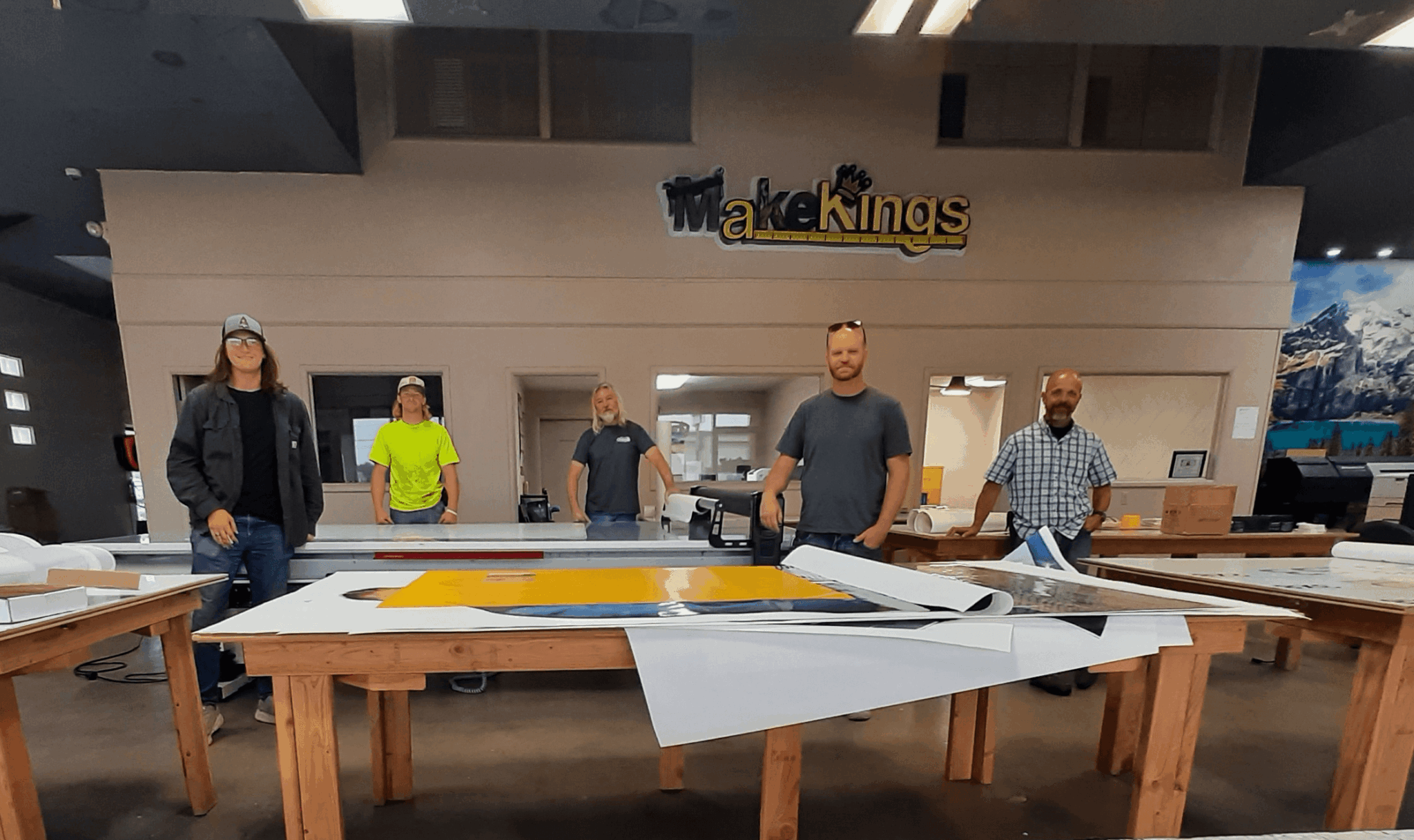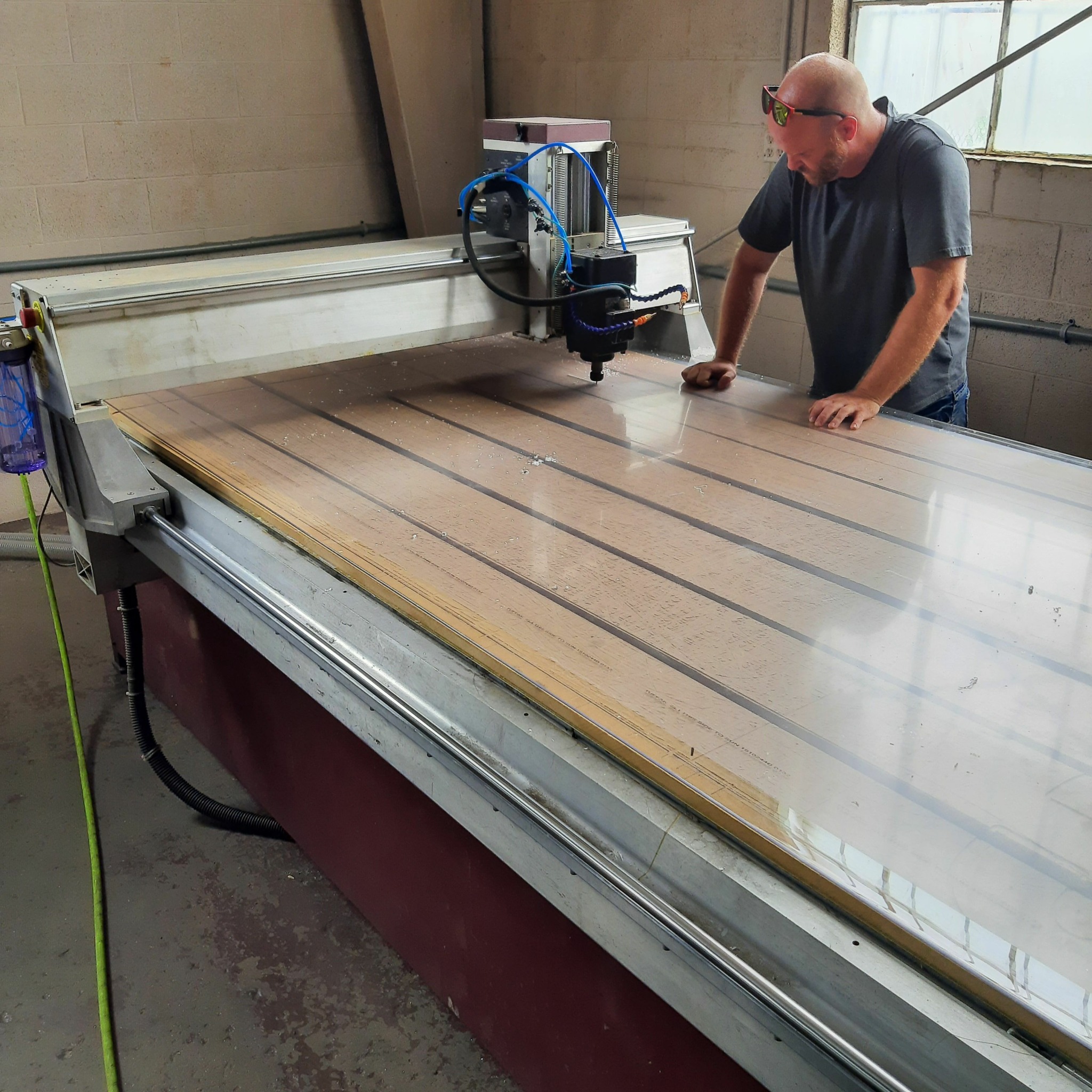We caught up with the brilliant and insightful Justin Schacknies a few weeks ago and have shared our conversation below.
Justin, looking forward to hearing all of your stories today. So, let’s start with a hypothetical – what would you change about the educational system?
I tend to think the current educational system is dated, and fundamentally flawed for a modern society.
With information being so readily available, like no other time in history, I lean towards education needing to shift away from rote memorization and the retention of facts that aren’t as relevant as they might have been in times past. Instead, we should focus on how to equip the next generation to utilize the tools that are already available to us — and maybe inherently inside of each of us.
I may be biased, coming from a household with little to no higher learning, but I’ve also found meaningful success without having access to any higher education myself.
I believe more time should be spent discovering what a given child naturally leans towards — what their drive is, what motivates them, what excites them — and teaching them that they do have the option to work, and to provide and service their community with whatever their own passions are.
I know for myself, I would have had a 10 to 15-year head start if I had been given more direction. I always knew I wanted to start my own business, but didn’t understand what my own talents were until I got much older — and how to utilize them in order to turn those abilities and interests into a profitable business.
Granted, I’m still learning every day. I just believe higher education has less place than it used to, and that many people could find meaningful, gainful employment and purpose with trades — skilled occupations nonetheless — that involve practical hands-on work after training through apprenticeships or vocational schools.

As always, we appreciate you sharing your insights and we’ve got a few more questions for you, but before we get to all of that can you take a minute to introduce yourself and give our readers some of your back background and context?
From a young age, Disney deeply influenced me. I remember going to Disneyland and seeing things that sparked such wonder—I wanted to create those kinds of experiences for others. There was something magical about holding a beautifully crafted object in your hands and being able to show it to someone else, to make them feel something. That excitement stayed with me, even though I never realized I could actually do that kind of work myself. Growing up poor, with a bit of a poverty mentality, it didn’t feel like something people like me got to do. Not because I didn’t believe in my ability—but because I didn’t believe any doors would open for me. Of course, looking back, I also never knocked.
Even as a kid, I had a desire to make cool things and to own a business. I would come up with little plans—imaginings, really—but never follow through, out of fear. I romanticized the idea of having a business more than I actually tried to build one. I was stuck on this concept that you had to have a full business plan, and I didn’t even know what that really meant. If I’m honest, I still don’t fully know—but maybe I’ve been working from a kind of instinctual plan this whole time without realizing it.
When I was around 20 years old, I found a little vinyl cutter on eBay for $300—kind of like a basic Cricut—and thought maybe I could sell stickers and turn it into a business. Not a full plan, but more of a “what if I accidentally fell into it?” I bought it, and six months later, after selling odds and ends (the kind of stuff you’d now see on Etsy), I bought a better machine for $750. That first job paid off the machine. To someone in my financial situation at the time, that was life-changing. That piece of equipment still works in my shop today. We use it weekly.
Life moved on—I had a child, moved from California to Oklahoma, and while I always carried that dream of business in the back of my head, I ran into a lot of polite but uninterested people. I’m sure I came off as a slick, fast-talking California kid, and it was a bit of a culture shock. I took jobs to support my family, got involved with church and the local community, and eventually got a position working safety for a contractor at the local refinery. That was a blessing—it taught me how to manage larger projects and exposed me to a new level of responsibility and organization.
I worked there for about five years before the business shut down. Around that time, a friend told me about a local sign shop that needed someone to run it. I jumped at the chance and ran it for about two years. During that time, I met a man who was opening a children’s museum, and we clicked over our shared love for creativity. I offered to volunteer my time to make unique exhibits—custom, hands-on builds you couldn’t buy anywhere. His wife, seeing our energy and potential, suggested we go into business together. I’m very thankful for both of them.
They not only partnered with me and my wife to get our business started—they also bought the building we needed and leased it to us at exactly the right time. We got off the ground, but as time went on, it became clear that my pace—still affected by poverty thinking—wasn’t quite fast enough to match his. I was sweating over $200 decisions, while he was ready to move faster. Eventually, he asked if I’d like to buy him out, and I did. I’ve since even purchased the building from him.
Looking back, it really has been a bit of a Cinderella story—from rags to building something solid for my family and meaningful for my community. I’ve grown a lot. I’m still learning. But I’ve finally stepped through the door I was always meant to knock on.
I completely and wholeheartedly believe in a quote from Zig Ziglar: “If you help enough other people become successful, your success will come.” That belief isn’t just inspirational—it’s foundational. It’s our motto, our mission, our creed, and the entire reason our business exists. We’re here to help others succeed.
Many times, I’ve told businesses they didn’t need a certain amount of signage, even when it meant less money in my pocket. But if it wouldn’t benefit them, it wasn’t the right thing to do. I’ve steered companies away from spending money unnecessarily and pointed them toward better solutions. Because if they win, we win—and I stand by that every single day.
Coming up on November 1st, we’ll celebrate our 8-year anniversary here in town. It’s been an incredible journey, and we’re excited to continue growing—especially considering how far we’ve come in just these last eight years. We’re looking ahead to the next ten years with hope, determination, and gratitude. More than anything, we want to keep serving our community and help make our town better with every sign we create. Our goal is that each sign not only supports a business—but builds a sense of ownership and unity within the community itself.

Okay – so how did you figure out the manufacturing part? Did you have prior experience?
At our core, we are makers—and that shows in the wide range of signage products and services we offer. What started with a simple vinyl cutter quickly evolved into a full-scale, vertically integrated sign operation. We produce everything from cut vinyl graphics, vehicle wraps, and banners to dimensional signs, channel letters, and custom fabricated structures—all manufactured in-house.
Very early on, we realized vinyl graphics were just the beginning. To offer more dynamic, dimensional signage, I built our first CNC router so we could start cutting plastic letters and custom shapes. That opened the door to 3D signage, routed signs, and custom panel work. Over time, we also began retrofitting surplus CNC machines to expand our capabilities while keeping costs efficient. This approach allowed us to dive deeper into custom fabrication, sign frames, and even architectural features.
As our projects grew in complexity, we added a laser cutter to handle finer detail work, such as acrylic letters, precision templates, and intricate engraving. Meanwhile, we continue to offer high-volume digital printing with multiple solvent printers, which are essential for our full-color banners, window graphics, decals, and fleet wraps.
Installation is another critical part of our work. That’s why we invested in a bucket truck early on—and we’re now working on our second one. This lets us handle pole signs, wall signs, elevated installs, and maintenance with full control and flexibility. Whether it’s working at height or pouring concrete for sign footings, our crew is hands-on from start to finish.
Every piece of equipment we’ve brought in—CNC routers, printers, laser machines, and bucket trucks—has enabled us to offer more to our clients. We take pride in having redundancy in our machines, ensuring fast turnaround and minimal downtime. We’re currently bringing a second CNC router online, and we have multiple solvent printers to meet demand for wraps, signs, and more.
But what truly sets us apart is the range of craftsmanship and trades we engage in daily. One day we’re using a skid steer to prep a foundation, and the next we’re wiring up sign components or fine-tuning a print job. Being a sign maker today requires versatility—we’re part fabricator, installer, designer, electrician, printer, and builder.
Even in a small town, people are often surprised at just how much we do in-house. But for us, it’s natural—we love the craft, and we love the challenge. We’re not just a sign shop. We’re a hands-on, full-spectrum design and fabrication studio with the tools and know-how to bring ideas to life.

How’d you build such a strong reputation within your market?
A guiding principle that consistently shapes how we operate comes from the Book of Proverbs: “Do you see a man skilled in his work? He will stand before kings; he will not stand before obscure men.” It also advises not to seek out places of honor—don’t elevate yourself only to be asked to move for someone more deserving. These ideas have deeply influenced how we run our business. We don’t chase praise or recognition. Instead, we aim to let our work speak for itself. We stay humble, keep our heads down, and focus on doing the job well—not for glory, but to serve.
That mindset is core to who we are. We believe our number one function as a business is to serve. Whenever we drift from that—when we make it about ourselves rather than our customers—we lose sight of what really matters. Service is what keeps us grounded, relevant, and connected.
Our involvement in the local community is a direct expression of that belief. We do what we can to show up, support others, and be available when people need help. Recently, we’ve been especially fortunate to bring on a newer team member who’s a perfect fit for this kind of outreach. He has the time and the heart to actively engage with the community, and that kind of presence makes a big difference. Whether it’s through the Chamber of Commerce or simply being visible and approachable, we’ve learned that most people just need to know we exist in order to want to work with us.
We don’t push for the sale. We lead with genuine help. We’re here to listen, problem-solve, and offer real solutions—because when people see that we’re invested in their success, they naturally come to see us as the trusted resource they need.



